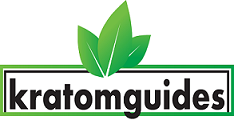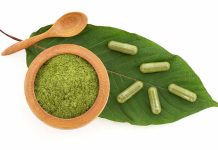There are as many reasons people take kratom as there are combinations of strains, regions, and vein colors. For the record, that’s a lot! Kratom is a Southeast Asian plant related to coffee by way of the Rubiaceae family.
Like kratom’s cousin coffee and their second cousin Camellia sinensis, the tea flower, it has multiple benefits inside and out, but today we’ll be talking more about the topical benefits of using kratom as a skincare product.
Coffee scrubs and green tea soap are nothing new, but considering the proven benefits of these plants related to skincare, it’s not a surprise they have steadily grown more widespread in use.
Kratom, however, may be newer on the scene but may offer even more benefit than its more well-known competitors in the Rubiaceae and Theaceae family of plants. Kratom continues to be studied and is becoming more widely used. As it does, likely more and more possible uses will be revealed, but for today, we’ll focus on kratom topicals.
Like kratom’s cousin coffee and their second cousin Camellia sinensis, the tea flower, it has multiple benefits inside and out. But, today we’ll be talking more about the topical benefits of using kratom as a skincare product.
Can Kratom Be Used Topically For Skincare and Anti-Aging?
In addition to green tea and coffee skincare products, with the burgeoning cannabis industry booming, we see more and more CBD-infused or marijuana modeled products from lotions to bath bombs.
Kratom, like cannabis and CBD, also has interesting, if slightly different, effects when used topically rather than ingested. The skin is the largest organ of the body and forms a protective barrier for our inner tissue.
That said, without our pores allowing purification of the body through sweat, or protecting us with a secondary barrier of natural oils, our bodies wouldn’t function properly.
Our primary barrier and protector, the skin, would not be able to do its job to the extent it does.
Due to the porous nature of the skin; however, topicals infused with herbs can have an effect on us. This is the same principle behind why nicotine patches work, for instance. The nicotine is subdermally (below the skin) ingested.
So, some of the alkaloids still enter the bloodstream but as, or more critical in this case, the healing properties of kratom can be applied to protect that protective barrier covering us literally head to toe.
The Science Behind Kratom Skincare
Kratom is not nearly as well known for its skincare benefits as for its many other properties, but a long tradition of topical use in various countries is steadily being backed up by scientific research. Kratom contains an antioxidant similar to the EGCG found in green tea which is actually far more potent at free radical scavenging, offering greater protection against oxidative stress damage, which can result in the appearance of aging.
According to a 2014 study in the Asian Pacific Journal of Cancer Prevention: “These findings revealed that the medicinal and nutritional values of mitragynine obtained from ketum leaves that grows in the tropical forest of Southeast Asia and its analogues do not limit to analgesic properties but could be promising antioxidant and anticancer or chemopreventive compounds.”
Multiple studies have even shown kratom extracts to be effective at killing Salmonella typhi, and Bacillus subtilis even tested in clinical conditions.
A separate study showed that kratom extract was able to delay the growth of papilloma in rodent skin. In the essay “Malay Ethno-medico botany in Machang, Kelantan, Malaysia” published in the journal Fitoterapia (Phytotherapy), researchers explained that in Malaysia kratom had long been taken for various reasons, not least of which was in decoction as a skincare product and for anti-aging purposes.
Yet another study explored how the Thai had also found the topical use of kratom and various other herbal folks medicines to be effective against various skin diseases.
In addition to kratom’s antibacterial, antiviral, antimicrobial, and antioxidant properties, it could be useful for much more.
Anecdotal data from some kratom skincare users suggests it could possibly be helpful for exfoliation, relieve itching or skin irritation, psoriasis, “red skin syndrome” (topical steroid withdrawal), eczema and even improve skin tone and also ease muscle aches in the form of a salve or balm.
People have reported getting real benefits from using kratom-infused topicals. One writer shared her experience with a certain product, which resulted in a lessening of aching muscles and the eradication of dry, flaky skin. Sure, the latter could just be the moisturization, but pain relief – that’s awesome!
Judging by this person’s story, it’s also possible that people with sensitive skin won’t be irritated by kratom-infused products. It goes without saying, though, that like any new topical, you’ll want to test a small area before you go slathering yourself from head to toe!
She tried a prepared product, but you could make your own homemade kratom salve if you want to get crafty.
(Do note that just mixing kratom powder into your favorite lotion probably won’t do the trick, because the powder molecules are too large to get into the skin. You’ll need to distill or make a liquid/oil extract to get the most benefit.)
Can Kratom Cause Dark Spots On Skin?
There have been studies that showed that chronic users of kratom who abused large amounts above the recommended quantity over a period of years experienced skin pigmentation.
This is a rare condition that is primarily only found amongst users in Southeast Asia who took large amounts on a regular basis. Some kratom users in the USA have been known to use as much as 6-12 grams or more per day for the management of chronic pain.
It is believed that the cause of pigmentation issues related to long-term use is possibly related to alteration of hormone production or melanin production. Melanin is the endogenous compound in teh body that affects the darkness of skin. Greater amounts of melanin are present in darker skin. Though melanin is not a hormone, it is affected by hormones such as Vitamin D (which happens to be a hormone).
Others have theorized that only certain people are predisposed to kratom pigmentation issues which might explain why so few cases are in the medical literature and those cases are all in Southeast Asia. Still, others have postulated it might possibly be related to a kratom allergy.
The pigmentation issue generally occurs on the cheeks.
If you have any ill effect, allergic response, or discoloration discontinue immediately and speak to a medical professional.
But, this is unlikely as there are so few issues of the pigmentation and few to no problems related to kratom allergy that has been reported.
Where Can I Buy Kratom Skincare Products?
Hopefully, by this point, if you already had a curiosity about using kratom products topically, you are sold on the idea. If so, then your next question might be where you can buy kratom topicals. Depending on exactly what kind of product you desire, there are many options as far as topical products and sources for various products.
The website My Kratom Source offers Soothing Kratom Salve, Kratom “Good Vibes” Bath Bomb, Kratom “Serenity” Bath Bomb and Kratom “Serenity” Soap. Kratom vendor PA Botanicals offers a variety of kratom soaps including ones enriched with lavender, vanilla or lemongrass.
Kat’s Botanicals also offers multiple kratom soaps with your choice of fragrance like Eucalyptus Mint, Beau Monde (green iris, violet, sandalwood, ambergris, and French verbena) and Bella (“citrus and sweet florals” with Tahitian vanilla).
These are just a handful of possible choices, as the industry grows and more and more people use and tout the benefits of topical kratom it’s likely we’ll find the market for kratom skincare and beauty products continue to grow.
How Do You Make a DIY Kratom Skincare Product?
There are multiple, topical skin care products available for purchase, but if you’re into DIY crafts, you might have fun making your own as well. This is especially true if you already have the necessary equipment.
If that’s not the case, don’t fret, after the initial investment into the proper tools you may find it rewarding to make your own kratom soap which can be made in the same way as green tea soap or coffee soap, just with even more antioxidant potency and greater antibacterial, antiviral and antimicrobial activity.
Making kratom soap isn’t much different than any other soap. You’ll need a soap base and a double boiler. Melt the base until all the pieces are evenly dissolved. If you wish, you can add a color base, but if your aim is a skin-healthy soap, you might want to go with a natural dye that has added benefit to the skin and body like turmeric, henna or green tea powder. Don’t add too much or you could discolor the soap!
You may want to add oils for a fragrance to improve the sensual qualities of your therapeutic bath experience. About a tablespoon full of skin-safe fragrance oil or a teaspoon full of undiluted essential oil per pound of raw soap base should do.
For additional benefits to skin health, you can add a teaspoon full of coconut oil, almond oil, grapeseed oil, Moroccan argan oil, shea butter, olive oil or lanolin for additional skin protection.
Once these are blended, mix thoroughly and pour carefully into your mold and leave it to dry. Your soap mold should show how many inches it will hold, and there are different sizes, but about 4 ounces is average.
Once cooled, pull the mold away from the soap carefully and remove the soap from the mold. Wrap in wax paper or plastic wrap immediately to keep your homemade soap from drawing moisture in the air, causing air bubbles.
You can also learn how to make kratom salve with a recipe from the Herbal Academy. In fact, there’s practically no limit apart from your own imagination as far as that goes. Look for recipes for herbal skincare products and use kratom as the main ingredient in place of things like coffee or green tea or other healthy plant products used for skin.
It’s not known whether or not very much mitragynine and 7-hydroxy-mitragynine actually seeps through the skin and into the bloodstream with topical use and just as likely that its benefits are more related to MG and 7-ho-MG and other alkaloids, flavonoids, and terpenes affecting the epidermis itself. That said, it is best to use moderation when using any herbal product or medicine.
Many of the studies related to kratom and the skin were trials run on animals, despite many people having used kratom skincare problems without incident, everyone is different. So, use sparingly and in small amounts to see if you have any adverse reactions and keep your use to a moderate level.
Apart from that though, if your interest is piqued, check out some of the recommended shops and their products and/or make your own KRATOM ON!








